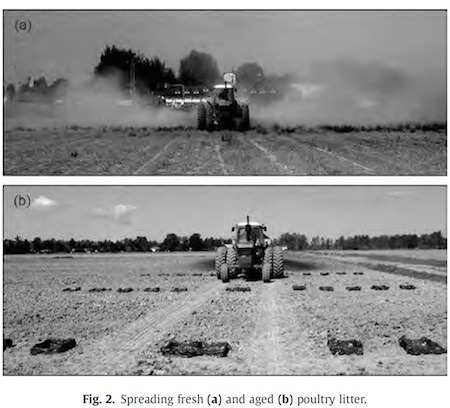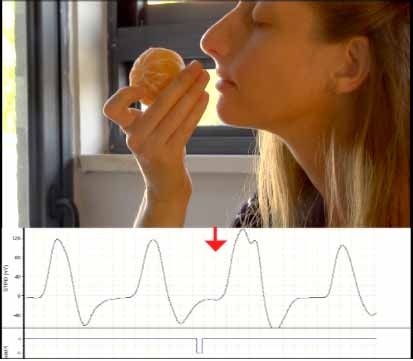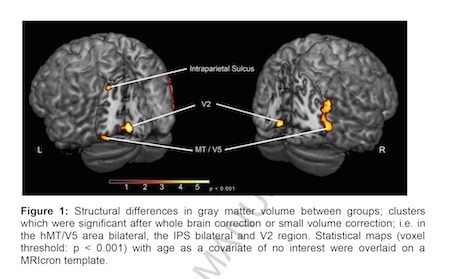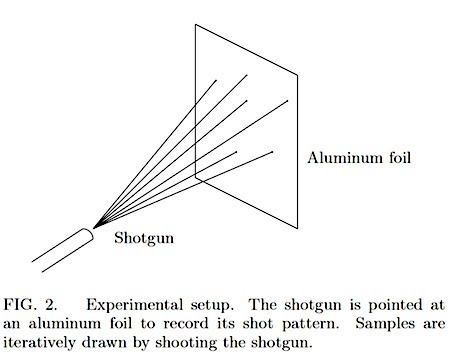Marc Abrahams's Blog, page 411
April 16, 2014
Introducing Vacuum Burials (new patent)
“[...] it is an established fact that all human and/or animal corpses commence to decay and decompose immediately after death occurs.
A recently published German newspaper article clearly attests to this corpse decay factor, and also provides data pertaining to the approximate rate of that decomposition. This item was published by the Deutsche Presse Agentur News Agency in March, 1994. It was re-published in the Mobile Press Register newspaper on Nov. 5, 1994. This article states, in its entirety, as follows:
‘The Deutsche Presse Agentur News Agency reported in March that German cemetery operators are worried about the increasing resilience of embalmed bodies. Because of the country’s land shortage, burial plots are often only rented out for 15 year periods, with the hope that the bodies will have decomposed by that time, and that families will not object to their disposal. Cemetery owners are now avoiding certain soils that retard air and moisture circulation, because they restrict the growth of bacteria that eat the bodies.’ “
The quote [* see note below] comes from a new US patent (8,695,184 ) Apr. 15th 2014, entitled ‘Method and apparatus for preserving human and animal remains’ Inventor Dr. Kurt W. Mikat, M.D., of Windermere, Florida, US, has the idea of preserving the deceased in a way which has some similarities with the preservation of foodstuffs, by use of a vacuum. To further develop the invention, the doctor has formed a Florida-based company, ‘Everlasting Preservation Systems’ which is currently seeking
“ … business developers, entrepreneurs, investors, vacuum pump manufacturers, funeral professionals, burial vault and casket manufacturers and others who can see the great potential of what we are trying to do.“
Regarding possible side effects, the website advises :
“The revolutionary aspect of our methods consist of the rapidity of total body dehydration including deep internal parts without opening or traumatizing the remains so that significant decay is quickly precluded. This results in a markedly lighter and somewhat smaller body. It also may result in shrinkage of the facial features but this can be prevented by appropriate measures if desired.”
[* note] The same paragraph can also be found (as can several others) in US patent 5659932 (1997).

April 15, 2014
“… because his experiments could be so outlandish”
Technology Review reports about art, innovation, and a certain prize-winning scientist:
The path to a great achievement—whether it is a technological innovation or a masterwork of art—is almost never direct. On the contrary, creative breakthroughs often come after wrenching failures. That idea animates The Rise: Creativity, the Gift of Failure, and the Search for Mastery , a book by Sarah Lewis…
Andre Geim, a physicist who is based at the University of Manchester, was not seen as someone who would ever win the Nobel Prize, because his experiments could be so outlandish. He won the IgNobel Award in 2000 for levitating a live frog with magnets—and then [won the Nobel] for isolating graphene 10 years later. He was dealing with failure: the psychological frustration that can come when people don’t quite take you seriously was difficult for him to endure, required a kind of courage. And he did [the graphene work] through a process of Friday-night experiments: times where, in the laboratory, they felt free enough to fail, and therefore made these groundbreaking discoveries. He’s a good example of what it means to allow the generative process of failure to help you, through these Friday-night experiments.
He was also doing something quite unusual, which is being a deliberate amateur: every five years or so he would go into another field [of physics] and work on other people’s realms of expertise, go to all the conferences, and ask questions they didn’t dare. It required that he get up to speed quickly in a new field but also, as he describes it, not read himself out of his own new ideas.

Examining Bits from the Brains of Jugglers
The international effort to see what, if anything, special might happen to, in, or with the brains of jugglers continues. Jugglers in Germany are the subject of this study. At the time of the study, each juggler stopped juggling and instead clambered into an imaging machine:
“Juggling revisited – a voxel based morphometry study with expert jugglers,” Juggling revisited – a voxel based morphometry study with expert jugglers,” P. Gerber, L. Schlaffke, S. Heba, M.W. Greenlee, T. Schultz, T. Schmidt-Wilcke [pictured here], NeuroImage, epub April 7, 2014. (Thanks to @ThatNeilMartin for bringing this to our attention.) The authors, at the University of Regensburg, Ruhr Universität Bochum, the University of Bonn, and the Max Plank Insitute for complex systems, Tübingen, Germany, explain:
“to our knowledge there are no studies that investigated expert jugglers, looking for specific features in regional brain morphology related to this highly specialized skill. Using T1-weighted images and voxel-based morphometry we investigated in a cross-sectional study design, 16 expert jugglers, able to juggle at least five balls and an age- and gender-matched group of non-jugglers…. Our study provides evidence that expert jugglers show increased gray matter density in brain regions involved in visual motion perception and eye-hand coordination, i.e. brain areas that have previously been shown to undergo dynamic changes in terms of gray matter increases in subjects learning a basic three-ball cascade.”
Here’s detail from the study. Like all brain imaging studies, the meaning of the data that produced this image is subject to interpretation, as are all things everywhere always:
BONUS: Video of W.C. Fields, one of the great jugglers of the 20th century whose brain was (alas!) never imaged:

April 14, 2014
The usefulness of voodoo dolls in studying blood sugar and aggession
The Associated Press tells of the new study by Ig Nobel Prize (for the study “‘Beauty is in the eye of the beer holder’: People who think they are drunk also think they are attractive“) winner Brad Bushman [pictured here] and colleagues:
The researchers studied 107 married couples for three weeks. Each night, they measured their levels of the blood sugar glucose and asked each participant to stick pins in a voodoo doll representing his or her spouse. That indicated levels of aggression.
The researchers found that the lower the blood sugar levels, the more pins were pushed into the doll. In fact, people with the lowest scores pushed in twice as many pins as those with the highest blood sugar levels, the researchers said….
The study procedure also raised [an unusual] problem. Bushman had to handle a call from his credit card company, which wanted to make sure it was really he who had spent $5,000 to buy more than 200 voodoo dolls.
The study is:
“Low glucose relates to greater aggression in married couples,” by Brad J. Bushman, C. Nathan DeWall, Richard S. Pond, Jr., and Michael Hanus, Proceedings of the National Academy of Sciences, epub April 2014. (Thanks to Davide Castelvecci for bringing this to our attention.) The authors explain:
“Intimate partner violence affects millions of people globally. One possible contributing factor is poor self-control. Self-control requires energy, part of which is provided by glucose. For 21 days, glucose levels were measured in 107 married couples. To measure aggressive impulses, each evening participants stuck between 0 and 51 pins into a voodoo doll that represented their spouse, depending how angry they were with their spouse. To measure aggression, participants competed against their spouse on a 25- trial task in which the winner blasted the loser with loud noise through headphones. As expected, the lower the level of glucose in the blood, the greater number of pins participants stuck into the voodoo doll, and the higher intensity and longer duration of noise participants set for their spouse.”

Firing a shotgun to calculate the approximate value of π
This mathematics paper broadens the old definition of “a shotgun approach” to solving a problem:
“A Ballistic Monte Carlo Approximation of π,” Vincent Dumoulin [pictured here], Félix Thouin, arXiv 1404.1499v2, April 8, 2014. (Thanks to investigator Marcus Sprenkel for bringing this to our attention.) The authors, at the University of Montreal, report:
“We compute a Monte Carlo approximation of {\pi} using importance sampling with shots coming out of a Mossberg 500 pump-action shotgun as the proposal distribution. An approximated value of 3.131 is obtained, corresponding to a 0.33% error on the exact value of {\pi}. To our knowledge, this represents the first attempt at estimating {\pi} using such method, thus opening up new perspectives towards computing mathematical constants using everyday tools.”
Here’s detail from the study:
The Physics arXiv Blog wrote an essay about this.
BONUS (unrelated): ”Proteomic analysis of human gastric juice: a shotgun approach,” Cynthia RMY Liang,, Sandra Tan, Hwee Tong Tan, Qingsong Lin, Teck Kwang Lim, Yi Liu, Khay Guan Yeoh, Jimmy So, and Maxey Chun, Proteomics 10, no. 21 (2010): 3928-3931.

New recommendation for distributing fresh vs. aged poultry litter
One should not necessarily be blithe about distributing fresh vs. aged poultry litter, if one takes to heart the findings of this study:
“Centrifugal spreader mass and nutrients distribution patterns for application of fresh and aged poultry litter,” W. D. Temple, M. Skowrońska, and A. A. Bomke [pictured here], Journal of Environmental Management, vol. 139, 2014, pp. 200-207. (Thanks to investigator Marcin Klejman for bringing this to our attention.) The authors, at the University of British Columbia, Canada and the University of Life Sciences in Lublin, Poland, report:
“Poultry litter (PL) consists of chicken or turkey manure, feathers and bedding material which is typically wood shavings, sawdust, wheat straw, peanut hulls or rice hulls…. A spin-type centrifugal spreader was evaluated using fresh and aged poultry litter… Relative to the aged litter, the broadcast fresh litter resulted in higher coefficients of variation (CV) over its transverse distance, a narrower calculated space distance between passes for uniform spread and lower soil available N [notrigen] concentrations…. [Our] results suggest that poultry litter should be allowed to age before broadcast application is attempted.”
Here’s detail from the study:


Robots Ring the Doorbell
“Generally speaking, modeling the developmental trajectory for almost any intelligent task that a 2-year-old child can perform on a robot is a potential research topic for us.”
- explains the website of the Developmental Robotics Lab at Iowa State University, US. As an example to help clarify the (somewhat ambiguous) statement above, see the lab’s work on teaching robots to ring the doorbell.
“Buttons are ubiquitous in human-inhabited environments. These simple 1-dof widgets are used to control many essential devices and mechanisms. A robot that cannot press buttons would not be able to use anything controlled by a button and thus would not be very useful.”
Professor Alex Stoytchev, and colleagues have published several papers on the subject. e.g. ‘Learning to Press Doorbell Buttons’ (in: Proceedings of the 9th IEEE International Conference on Development and Learning (ICDL), Ann Arbor, Michigan, August 18-21, pp. 132-139, 2010.)
Also see: (later research) ‘Learning to Detect Doorbell Buttons and Broken Ones on Portable Device by Haptic Exploration In An Unsupervised Way and Real-time’
Plus: A plethora of doorbell-pressing robot videos are provided here.

April 13, 2014
The wound-healing ape and the hydrotherapy pig
The Denver Medical Times [August 1899 vol. XIX, no. 2, pp. 65-71] was the venue for James Weir Jr.’s compendium of observations on how animals treat themselves when afflicted by diseases.
Among the highlights:
Several safari travelers report that elephants shot by hunters may plug their wounds with moistened clay.
“In 1882 there was on exhibition at the St. Louis fairgrounds a magnificent specimen of the dog-faced ape, or chacma.” The chacma, what we would now call a baboon, injured himself on a nail. He immediately grabbed a pile of sawdust and pressed it to the cut until it stopped bleeding.
Pregnant lobsters afflicted by Histriobdella worms expose their egg clusters to the sun, so the sunlight can kill the parasites.
One of the author’s dogs, Toney, serves as doctor to other dogs by licking wounds that they can’t reach on their own bodies.
A sow had been diagnosed with peritonitis after being kicked by a mule, and was desperately trying to escape her pen. After her owner took pity on the doomed animal, she made a beeline for an iron-rich spring that had been fenced off.
Follow Amboceptor on Twitter: @AmboceptorBlog

A kind of thing that humans can learn during sleep
The industry devoted to “sleep learning” aside, it’s been unclear that people can learn much of anything while they are asleep. An experiment (by much the same team that later noted the phenomenon of contagious sniffing), says it has identified one kind of thing that people can indeed learn while they are asleep:
“Humans can learn new information during sleep,” Anat Arzi, Limor Shedlesky, Mor Ben-Shaul, Khitam Nasser, Arie Oksenberg, Ilana S Hairston and Noam Sobel, Nature Neuroscience, October 2012. vol. 15(10), pp. 1460-5. The authors, at Weizmann Institute of Science, Loewenstein Rehabilitation Hospital, and the Academic College of Tel Aviv, report:
“During sleep, humans can strengthen previously acquired memories, but whether they can acquire entirely new information remains unknown. The nonverbal nature of the olfactory sniff response, in which pleasant odors drive stronger sniffs and unpleasant odors drive weaker sniffs, allowed us to test learning in humans during sleep. Using partial-reinforcement trace conditioning, we paired pleasant and unpleasant odors with different tones during sleep and then measured the sniff response to tones alone during the same nights’ sleep and during ensuing wake. We found that sleeping subjects learned novel associations between tones and odors such that they then sniffed in response to tones alone. Moreover, these newly learned tone-induced sniffs differed according to the odor pleasantness that was previously associated with the tone during sleep. This acquired behavior persisted throughout the night and into ensuing wake, without later awareness of the learning process. Thus, humans learned new information during sleep.”
Professor Sobel was noted early in his career for the discovery that humans can, if they go about it properly, follow a scent trail across an open field.

April 12, 2014
Mirror Sniffing – contagious?
If you watch a movie which shows actors engaging in acts of sniffing, are you likely to sniff along with them?
 The Olfactory Research Group, of the Department of Neurobiology, Weizmann Institute of Science, Rehovot, Israel have investigated the possibilities, and name such behaviour ‘Mirror Sniffing’. [That's in the sense of a mirrored or copied action rather than about people who like to sniff mirrors.]
The Olfactory Research Group, of the Department of Neurobiology, Weizmann Institute of Science, Rehovot, Israel have investigated the possibilities, and name such behaviour ‘Mirror Sniffing’. [That's in the sense of a mirrored or copied action rather than about people who like to sniff mirrors.]
Researchers Anat Arzi, Limor Shedlesky, Lavi Secundo and Noam Sobel asked 27 subjects to participate in their experiments :
“Subjects watched the movie ‘Perfume’ in an ‘odor clean room.’ This room is subserved by high-throughput high-efficiency particulate absorption and carbon filtration and is entirely coated in stainless steel so as to prevent odor adherence. The movie Perfume was selected because in its first 60 min, it contains 28 movie sniff events (MSEs) where a character takes a sniff.”
Would the participants mimic the movie sniff events? Their nasal inhalations were recorded using a nasal cannula attached to a spirometer, and the results, say the research team, were significant.
“We found that humans sniff in response to olfactory sniffing of characters on screen in a movie. Moreover, the auditory component of on-screen sniffing behavior was the dominant aspect driving sniffing in observers.”
The team’s paper can be read in full here: Mirror Sniffing: Humans Mimic Olfactory Sampling Behavior in: Chemical Senses, 39: 277–281, May 2014. And, a short movie, showing a selection of sniffing events (which may induce mirror sniffing in observers) may be accessed here. [note: in .mov format, a very sluggish 290MB download]
Note: Other oddly contagious behavioural phenomena include, of course, yawning. Though it’s not always contagious. Anna Wilkinson (of the UK), Natalie Sebanz (of THE NETHERLANDS, HUNGARY, and AUSTRIA), Isabella Mandl (of AUSTRIA) and Ludwig Huber (of AUSTRIA) jointly received the 2011 Ig Nobel physiology prize for their study “No Evidence of Contagious Yawning in the Red-Footed Tortoise.”

Marc Abrahams's Blog
- Marc Abrahams's profile
- 14 followers









